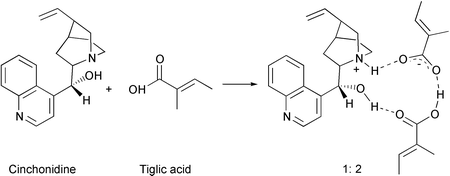FTIR study of chiral modifier–reactant interactions. The cinchonidine–alkenoic acid system
Abstract
Cyclic

* Corresponding authors
a
Laboratory of Technical Chemistry, Swiss Federal Institute of Technology, ETH-Hönggerberg, CH-8093 Zurich, Switzerland
E-mail:
baiker@tech.chem.ethz.ch
Fax: +41-1-632 11 63
Tel: +41-1-632 31 53
Cyclic

 Please wait while we load your content...
Something went wrong. Try again?
Please wait while we load your content...
Something went wrong. Try again?
D. Ferri, T. Bürgi and A. Baiker, J. Chem. Soc., Perkin Trans. 2, 2002, 437 DOI: 10.1039/B110421G
To request permission to reproduce material from this article, please go to the Copyright Clearance Center request page.
If you are an author contributing to an RSC publication, you do not need to request permission provided correct acknowledgement is given.
If you are the author of this article, you do not need to request permission to reproduce figures and diagrams provided correct acknowledgement is given. If you want to reproduce the whole article in a third-party publication (excluding your thesis/dissertation for which permission is not required) please go to the Copyright Clearance Center request page.
Read more about how to correctly acknowledge RSC content.
 Fetching data from CrossRef.
Fetching data from CrossRef.
This may take some time to load.
Loading related content
